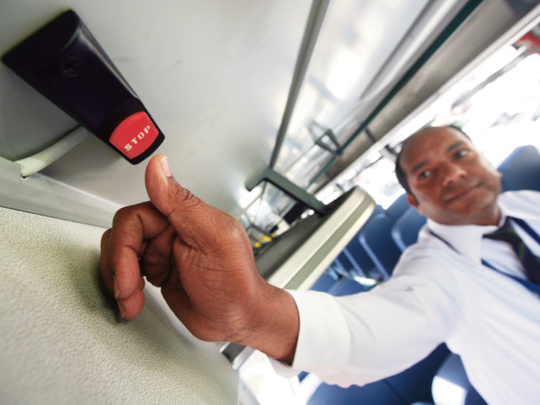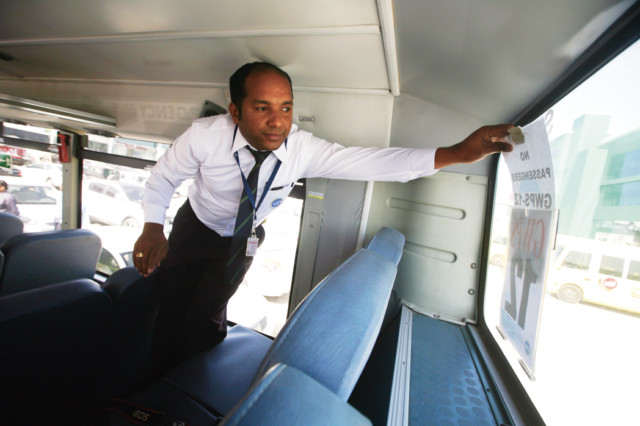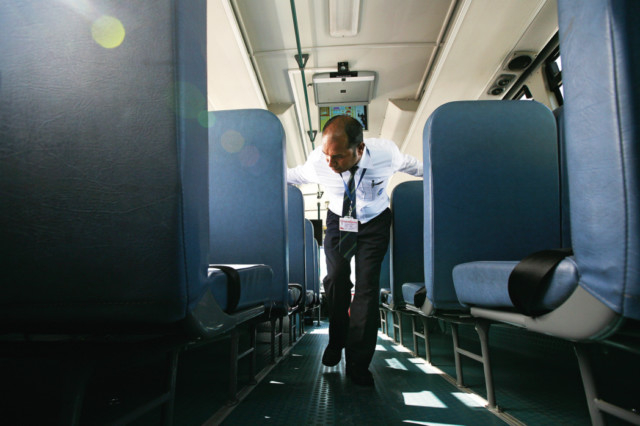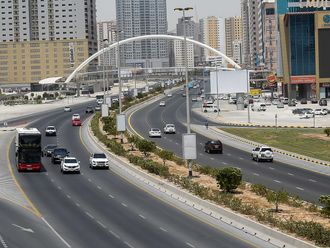
Dubai: Two weeks after an Abu Dhabi court sent three people to jail and ordered a school’s closure over the death of a four-year-old student on a schoolbus, the UAE’s largest transport provider has revealed its plans to beef up security on its fleet of buses.
Nizha Aalaa, a student of the capital’s Al Worood Academy Private School, died after being left behind for nearly six hours in her school bus last October.
On February 8, the Abu Dhabi Misdemeanour Court held the bus driver, conductor and supervisor accountable, besides clamping down on the school.
Raising the bar for school transport in general, M. Augustine, managing director of School Transport Services (STS) which carries over 60,000 students from 65 schools everyday, told XPRESS this week that all 1,600 buses on his fleet have been installed with “sleeping child check buttons” to prevent onboard deaths, and reverse cameras and thin film transistors are being introduced to check untoward incidents.
He said parents will soon be able to access a dedicated mobile app through which they can track their child’s bus and route in real time, besides communicate any complaint or message relating to pick-up, drop-off or absence on a one-to-one basis.
“These features are meant to complement several other devices which are already in place like GPS, scanners, electronic attendance, video surveillance and panic buttons, all of which are constantly monitored by our control room to ensure onboard safety,” said Augustine.
No child left behind
He said the sleeping child check button, piloted last year, effectively ensures that no child is left behind in the bus.
“Earlier, our drivers had to check the bus and put up a “no passenger” board in the back of the vehicle. The bus supervisor would check for these signs on all the buses that brought students to school in the morning. But there was no way of ensuring whether all children had left the bus when they returned home in the afternoon. So we introduced the sleeping child button as an additional measure.”
When the bus is empty, the feature requires the bus driver to switch off the ignition, walk down the aisle of the bus, checking each seat on the way. The conductor assists him. Once satisfied that there is no child on board, the driver places the “no passenger” sign. He also presses the “sleeping child check button” which is activated in 30 seconds. If the driver fails to press the button, an alarm goes off and the STS Control Room is immediately alerted. Simultaneously, lights begin to flash in the bus, drawing the attention of not just the driver but also any passers-by.
“It is not enough to introduce new technologies. Making sure they work and training our staff is equally important,” he added.
Augustine said STS has introduced reverse cameras to prevent accidents while buses are parking or reversing. “These cameras are very useful as they give a full view of the rear. Besides, we have also introduced thin film transistors, an equivalent to LED TVs, which make sure the three cameras on board are up to speed.”
He said while the electronic attendance system provides a real time log of children getting in and out of a bus, the control room gets specific alerts like a “still on board” alert if the ID card is not scanned twice, “different bus” alert if the child has got into a wrong bus, “speed alert” if the bus is speeding, a “geo-fence” alert if the bus strays from its route and so on.”
YOUSPEAK: Do you have concerns about your child’s school bus?















